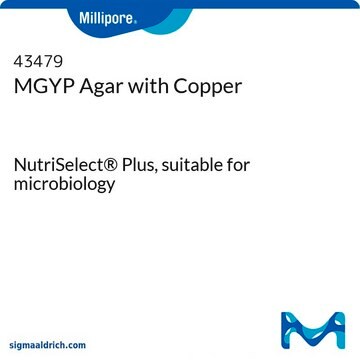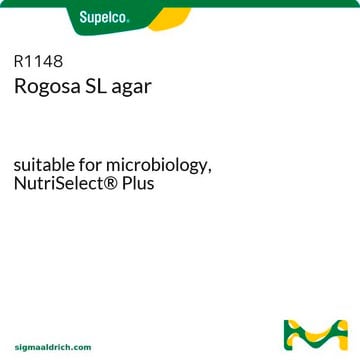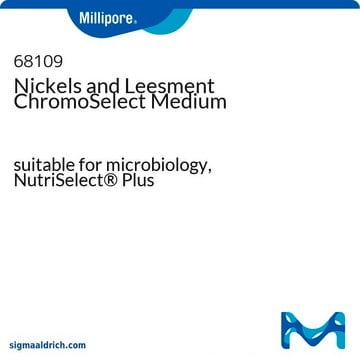02538
Raka-Ray Agar
suitable for microbiology, NutriSelect® Plus
Synonym(s):
Lactic Acid Bacteria Selective Agar Base
About This Item
Recommended Products
sterility
non-sterile
Quality Level
form
powder
shelf life
limited shelf life, expiry date on the label
composition
N-acetyl glucosamine, 0.5 g/L
agar, 17.0 g/L
betaine hydrochloride, 2.0 g/L
casein enzymic hydrolysate, 20.0 g/L
diammonium hydrogen-citrate, 2.0 g/L
fructose, 5.0 g/L
glucose, 5.0 g/L
liver concentrate, 1.0 g/L
magnesium sulphate, 2.0 g/L
maltose, 10.0 g/L
manganese sulfate, 0.66 g/L
monopotassium phosphate, 2.0 g/L
potassium aspartate, 2.5 g/L
potassium glutamate, 2.5 g/L
yeast extract, 5.0 g/L
manufacturer/tradename
NutriSelect® Plus
final pH
5.4±0.2 (25 °C)
application(s)
agriculture
bioburden testing
food and beverages
microbiology
shipped in
wet ice
storage temp.
2-8°C
suitability
Pediococcus spp.
selective for Lactobacillus spp.
Related Categories
General description
Application
Preparation Note
Analysis Note
Footnote
The designations basic, plus, or prime are added to indicate the quality control level, from basic quality control to standard QC plus to prime for full regulatory compliance.
Legal Information
Signal Word
Warning
Hazard Statements
Precautionary Statements
Hazard Classifications
Eye Irrit. 2
Storage Class Code
11 - Combustible Solids
WGK
WGK 3
Personal Protective Equipment
Choose from one of the most recent versions:
Already Own This Product?
Find documentation for the products that you have recently purchased in the Document Library.
Customers Also Viewed
Articles
Traditional methods are based morphology, staining methods, enzyme reactions (metabolism) and diverse media.
Cost-effective molecular biology method for lactobacilli detection is presented as an alternative to PCR-based methods.
Cost-effective molecular biology method for lactobacilli detection is presented as an alternative to PCR-based methods.
Cost-effective molecular biology method for lactobacilli detection is presented as an alternative to PCR-based methods.
Our team of scientists has experience in all areas of research including Life Science, Material Science, Chemical Synthesis, Chromatography, Analytical and many others.
Contact Technical Service


















